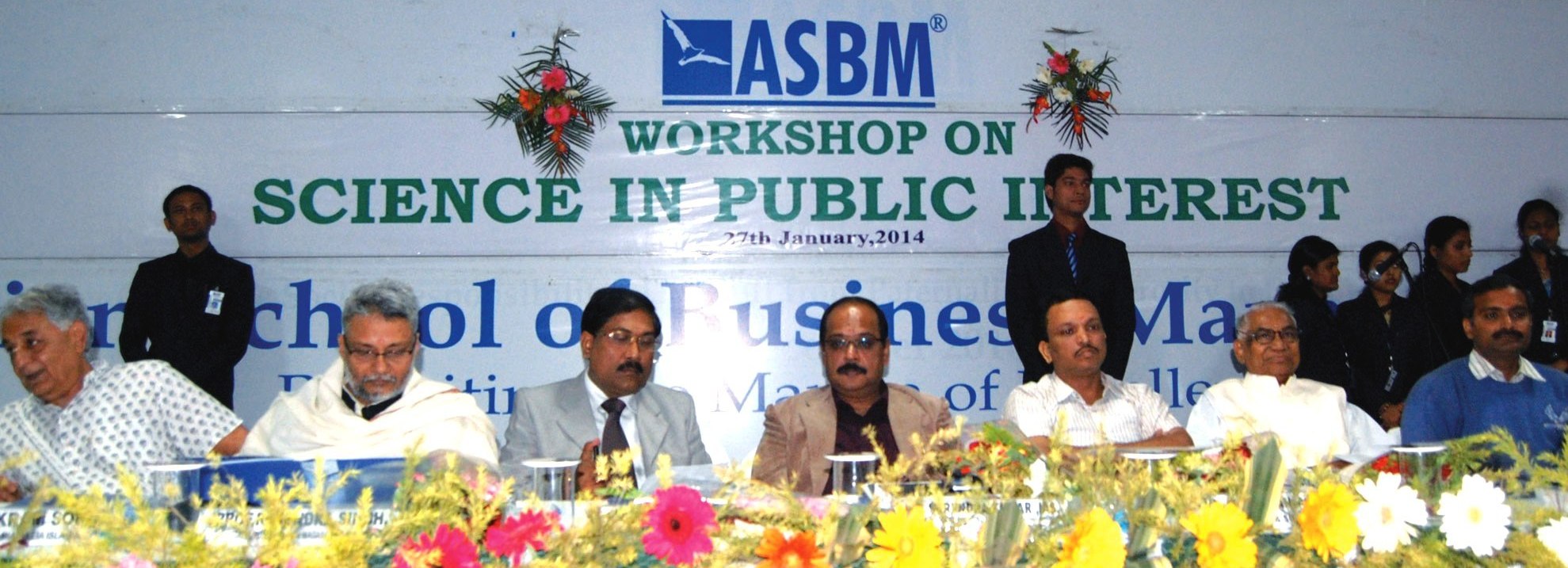
ASBM organizes National Workshop Management of Science in Public Interest
27TH JAN 2014: “Technology cannot solve water woes unless and until the involvement of community. The development in Odisha is only possible through community development and promotion of Odias,” said Dr. Rajendra Singh, Jal Purush and Ramon Magsaysay Awardee here today. He was speaking at the one-day national workshop on ‘Workshop on Science in public interest’, organized by Asian School of Business Management (ASBM).
Expressing concern over scarcity and mismanagement of water, Waterman Dr. Rajendra Singh said, “The number of water-deprived states has been increasing day by day. Water scarcity cannot be addressed with the development of technology. Community awareness and involvement in the process of water conservation can solve this issue.” Opposing the concept of privatization of water he said, “Community plays pivotal role for the water management. Government is privatizing the water. This is a negative concept. Technology is always fruitful when it meets the demands of common people. We should adopt indigenous knowledge systems for water conservation.”
He lauded the efforts ASBM towards the conservation of natural resources in Odisha.
Inaugurating the event, Mr. Surendra Kumar, IAS, Commissioner Cum Secretary, Department of Science and Technology said, “Water has become a scarce commodity compared to its availability post 90s’. Some of the greatest problems which country face is high dependency on technology. Technology changes with passage of time. Massive community aware Programme on conservation and preservation of water can minimize the water crisis.”
Mr. Vikram Soni, UGC Professor Jamia Millia Islaia said, “Invention is a part of Science and Technology. The country could face serious water crisis if the number of water bodies dwindles further. The solution lies in better maintenance of water bodies which would be possible only through technological innovations.”
Speaking at the occasion, Dr. SVN Rao, Project Director and Chief Engineer, WAPCOS Regional Office, Hyderabad gave thrust on rain water harvesting and said, “Proper management of water can solve several issues related to acute water crisis.” He also stressed on the ecological balance and afforestation. “We need some user-friendly, eco-friendly innovations to conserve and save our environment from various environmental issues, said Professor Sudarshan Padhi, Director, Institute of Mathematics and Applications.
“Society cannot be a productive society without the presence of intellectuals. Green and clean environment is the right of citizens. Sustainability and availability of natural resources is highly depending on its usage by people. Urbanization has grown enormously but sources of water have reduced. We need to develop indigenous technologies for water conservation and water purification,” said Founder & Director ASBM Prof.(Dr.) Biswajeet Pattanayak.
Former Union Minister, Mr. Bhajman Behera, DFO Chandaka Wild Life Division Mr. Manoj Mahapatra, Dr. Fanindra B. Nanda, Range Officer, Chandaka Wild Life Range, Mr. Manas Ranjan Mishra, Advocate and Social Activist, eminent social activist Mr. Kumar Onkareswar, social activist Prafulla Mahanta and Dean ASBM Prof. Kalyan S Ray also spoke on the occasion.
On this occasion, movies ‘On the brink’, ‘Hidden treasure’ were shown to the students.
